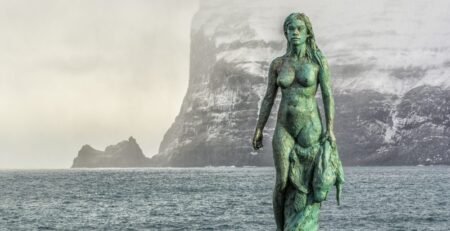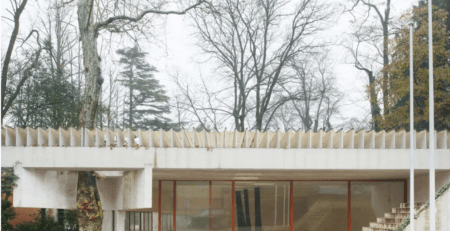
Greenland
Nú Ninja Helga Mjöll2021-05-21T18:52:56+01:00Greenland is not in Scandinavia geographically, it’s in North America. But it is an autonomous territory within the Kingdom of Denmark and has been politically and culturally associated with Europe for more than a millennium.
Located between the Arctic and Atlantic Ocean, between Canada and Iceland, Greenland is the world’s biggest island. Three-quarters of Greenland is covered by the only permanent ice sheet outside of Antarctica. With a population of about 56.000, it is the least densely populated region in the world. It is often said that Greenland is icy, and Iceland is green, it’s true.
Greenland has been inhabited on and off for over 4500 years (at least) by Arctic people from Canada and in the 10th century, Icelandic Norsemen settled in Greenland. It is said the Viking Erik the Red was one of the first to arrive because he had been exiled from Iceland for manslaughter. He named the island Greenland, supposedly to attract other settlers to come. It was a PR stunt.


Later, settlers set sail from Greenland and Iceland, with Leif Erikson (Erik’s son) becoming the first known European to reach North America nearly 500 years before Columbus reached the Caribbean islands.
The history of inhabitants, and therefore of Greenland’s culture, is different between areas. I mean, the geographical area of the country is 2,166,086 km2 (4 times the size of Spain) adding to that the extreme weather and harsh nature, travel and communication between areas was (and still is) very difficult.
Although Nordic people have passed by Greenland, it is first and foremost a country of Inuits. It’s the Inuits that have really inhabited the island throughout time, and it is they that have created the culture that makes Greenland Greenland, or Kalaallit Nunaat as they call their country.
Their art and culture are naturally intertwined with the circumstances of living in Greenland. They hunt animals and when they catch a prey, they use every single bit of it. They eat the meat, they wear the fur, they carve out the bones etc. nothing goes to waste, in fact a poor utilization of a dead animal is a serious dishonour in their culture.
Greenland was a Danish-Norwegian colony while Denmark and Norway were under one crown. In 1814 when that union was dissolved, and Denmark and Norway became two separate monarchies, Greenland was given to Denmark.
As a Danish colony, Greenland was kept as a reservation with hardly any contact with the rest of the world. Communication between the Danish and the Greenlanders was strongly discouraged. Greenlandic culture was considered uncivilized and the people primitive.
.
With the 1953 Danish constitution, Greenland’s colonial status ended as the island was incorporated into the Danish realm as a county. Danish citizenship was extended to Greenlanders and a forced modernization began; they were supposed to become Danish. Greenlandic language and customs were rejected.
These kinds of measures create tension and have made the national identity of many Greenlanders complicated.
In more modern history, the Greenlanders have gradually been gaining more independence and today they are an autonomous territory. Decolonization is a social and political issue that is complicated and emotional.
There is a strong movement of people working hard to keep the native Greenlandic culture alive and reserving the language. It’s a hugely important work because the world is certainly a richer place when cultural diversity is respected and cultivated.
—-
Written by Helga
Creator of Nú Ninja
Pics from Unsplash









